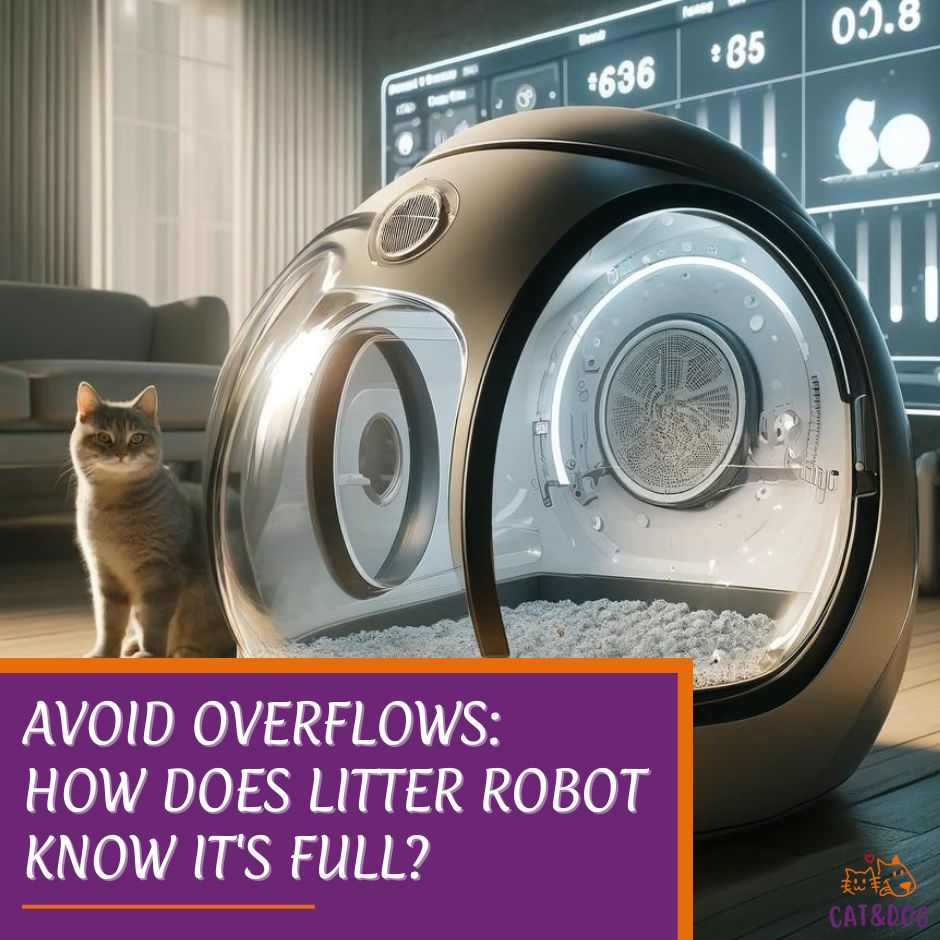Ever found yourself wondering how does litter robot know it’s full and can’t take in any more of your feline friend’s offerings? It’s all about the smart use of sensors! (1)
In the Litter-Robot 3, infrared sensors are the watchful eyes that keep track of waste levels. (2)
These sensors, which are positioned strategically above the waste drawer, beam a signal across the opening, and once the drawer fills up, the beam is blocked—telling the Litter Robot, “Hey, it’s time for a clean-up!”
However, these sensors can be a bit sensitive to being blocked by stray litter or debris, which sometimes leads to false alarms.
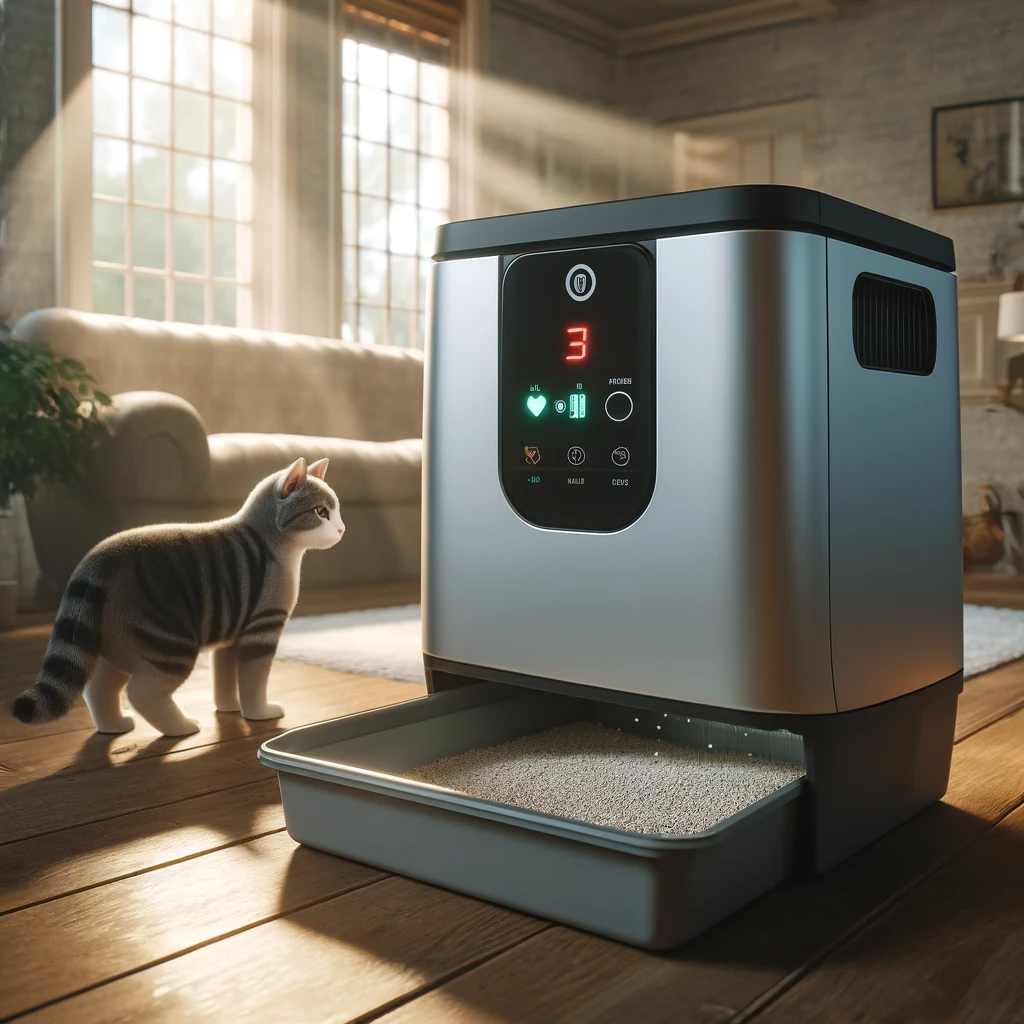
Now, if you’re the proud owner of the latest and greatest, the Litter-Robot 4, you’re in luck with its fancy OmniSense™ detection system, which uses laser technology for an even more accurate reading of waste levels.
Forget the false positives; this system is all about precision.
Plus, with weight sensors at the base anxiously waiting to feel the heft of the waste drawer, the device not only knows when it’s full but also activates every time your kitty steps out, keeping everything in tip-top shape.
And, should anything go astray, a simple calibration will put things right back in order.
Key Takeaways
- Infrared sensors in Litter-Robot 3 detect fullness by the beam interruption method, but they can occasionally be fooled by stray litter.
- The Litter-Robot 4’s OmniSense™ technology uses lasers for increased accuracy in waste level detection, outshining previous models.
- Weight sensors enhance functionality by measuring the drawer’s content after each use and requiring occasional calibration to ensure accuracy.
How Does Litter Robot Know It’s Full: Mechanisms Behind Full Detection
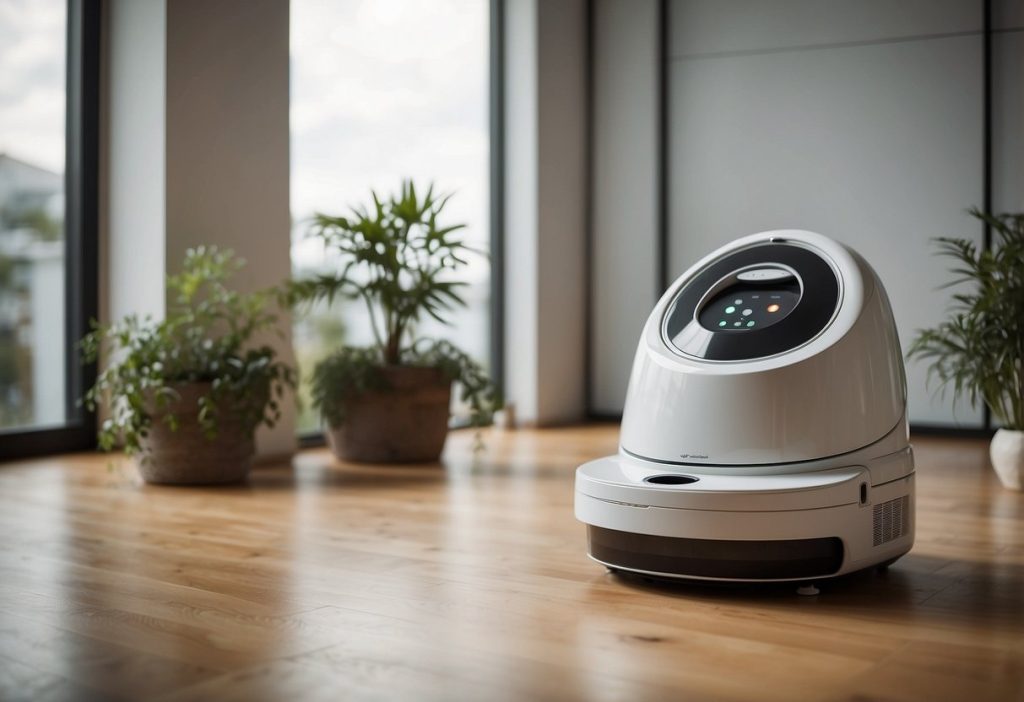
Sensor Activation and Data Collection:
Simply put, after your cat does its business and exits, the Litter Robot jumps into its automatic cleaning cycle. Part of this smart system involves sensors that assess the waste drawer’s level. (3)
They’re like little detectives, gathering crucial evidence—the waste level and how often your tiger visits its indoor jungle.
Process of Detecting Full Waste Drawer:
So, what happens after data collection? If the sensors determine that the waste drawer is full, they kick-start a sequence of operations. First, they patiently wait for your cat to leave.
Then they get down to business, measuring what’s been left behind. And voila—they know it’s full!
Communication to Users:
But how do you find out about it? Look for the indicator lights. A blue flashing light is your cue to action: “Time to empty me,” says your Litter Robot. If you’re out and about, no sweat!
The Whisker app will send you real-time alerts, so you’re always in the loop. To reset these notifications, it’s as simple as a few taps in the app. And presto, you’re good to go until the next full drawer signal.
So there you have it, a tidy sum-up of your Litter Robot’s fullness detection. You could almost say it’s got a ‘sixth sense’ for tidiness! (4)
Keep an eye on those signals, and you’ll never be caught off guard by a full drawer again.
OmniSense™ Detection Technology in Litter-Robot 4
How your Litter-Robot 4 remains so smart about detecting when it’s full? Well, the secret lies in the OmniSense™ Detection Technology. (5)
This innovative approach marries laser and mechanical sensors to ramp up accuracy like never before. (6)
And if you’ve got a multi-cat home, you’ll appreciate how it identifies fuller drawers swiftly, making “Oops, I missed that!” a thing of the past.
How it works:
- Enhanced Accuracy: We’ve got a winning combo here:
- Lasers – They’re not just for sci-fi movies; they ensure precision in sensing litter levels.
- Mechanical Sensors – These trusty mechanics back up the lasers for that extra assurance.
Example: Multi-cat households, you know the struggle, but not anymore! These sensors keep an eye out for increased usage, significantly cutting down on missed full drawers.
When we talk about Safety and Efficiency, it’s like your robot has a built-in guardian angel. It’s always on the lookout, with continuous monitoring of four safety zones.
- Safety Checks:
- Operation Pause – It automatically halts the cleaning cycle if your curious cat hops in unexpectedly, halting the “Where did Fluffy go?” mini heart attacks and guaranteeing purrfect safety.
Ah, the benefits! Besides avoiding the unpleasant surprise of an overflowing litter drawer, you preserve the harmony of your home by preventing potential accidents.
Your Litter-Robot 4 keeps your feline friends’ well-being at the forefront, all while keeping its efficiency game strong. Isn’t technology amazing?
Comparing Detection Systems in Different Models
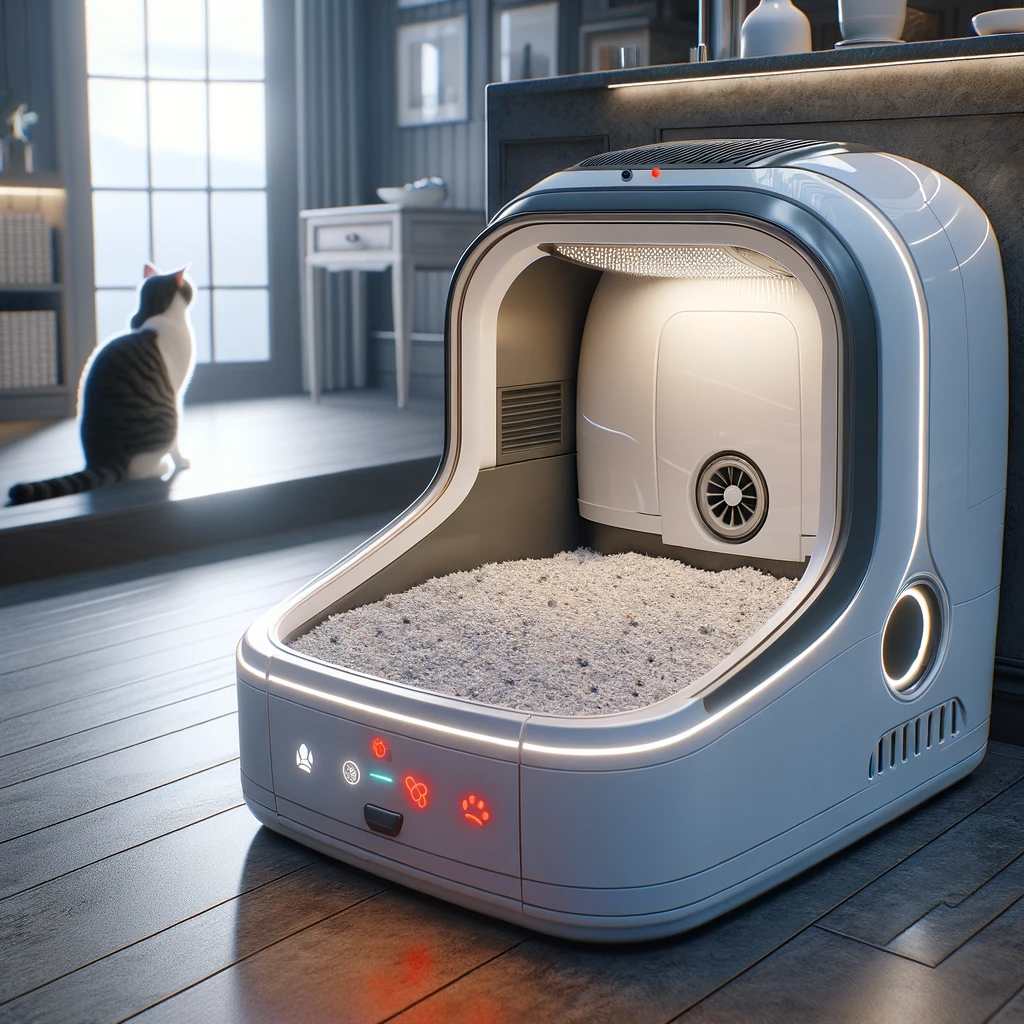
Litter-Robot 3 had us all nodding in approval with its use of infrared and weight sensors. These were great at determining when the waste drawer was full.
You might remember occasionally checking the blue light that signaled it was time for a cleanup. It was pretty smart, wasn’t it? Now, here’s where things get exciting with the Litter-Robot 4.
Aimed at stepping up their game, the folks at Litter-Robot introduced something pretty nifty – the OmniSense™ detection system which uses, wait for it… laser technology!
Yes, you heard that right. Your kitty’s litter box now has lasers!
Key Differences at a Glance:
| Feature | Litter-Robot 3 | Litter-Robot 4 |
|---|---|---|
| Detection System | Infrared and weight sensors | OmniSense™ with laser technology |
| Accuracy | High | Higher |
| User Experience | Good | Better |
With these lasers, the precision has shot up, and the coverage is comprehensive. No more guesswork; when your Litter-Robot says it’s full, it means business.
Ever felt like you’re living in a future where robots are the new house pets? Because with this kind of upgrade, it sure feels that way sometimes!
And there’s a bonus: these improvements aren’t just for show. They lead to a cleaner litter area and a happier you.
After all, isn’t that what we all want—more time to spend with our furry overlords instead of cleaning up after them?
Now go on, give your upgraded robotic litter box a pat for being such a smart cookie, and maybe give your cat a treat too; they’re the real bosses, aren’t they?
Notification and User Alerts
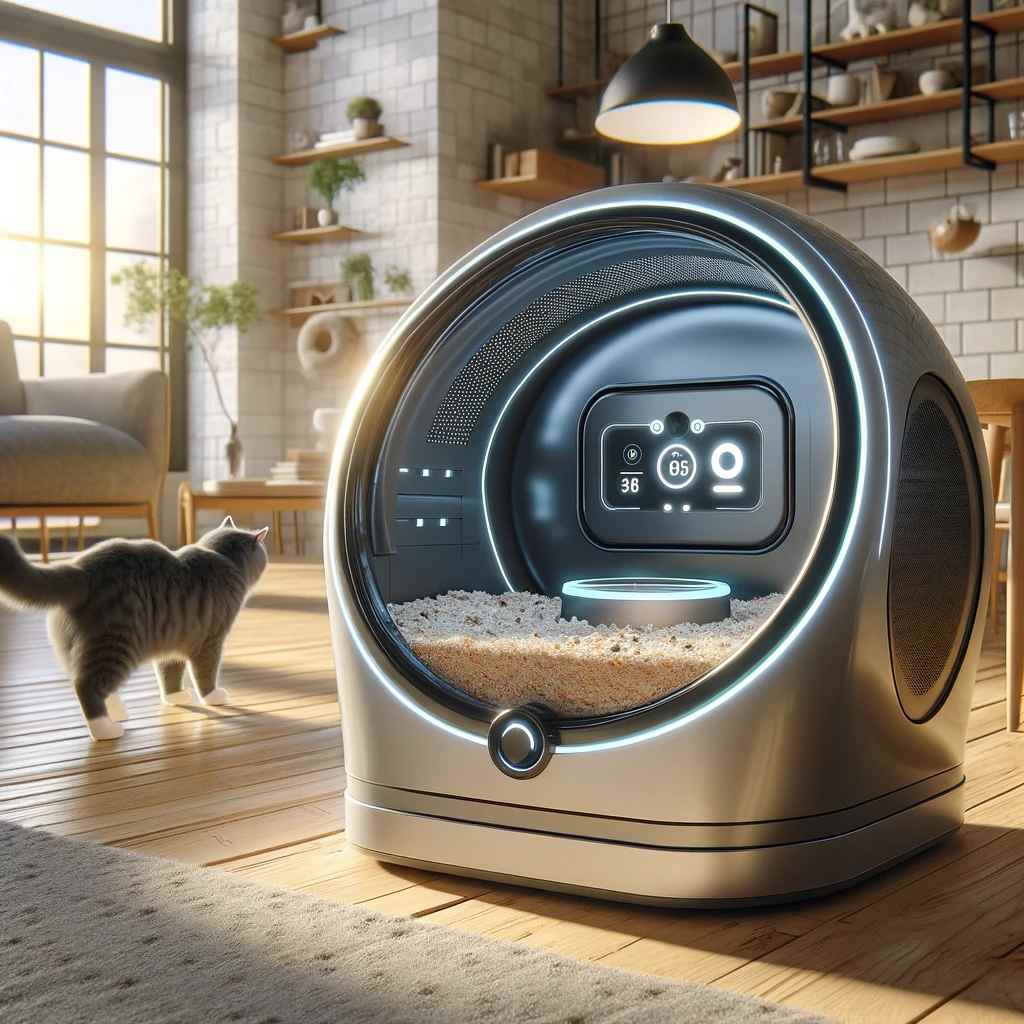
Litter-Robot got a cool set of indicator lights and mobile app notifications that are like little chats about what’s going on with your kitty’s space capsule!
- Blue Light Flashing: Hey, it’s time to empty the waste drawer! If it keeps flashing, give the sensors a little cleanup or hit the reset button.
- Solid Blue Light: All systems go! Your Litter-Robot is ready for its next space mission.
- Yellow Light: This means the robot is in the middle of a cleaning cycle. Just a bit of patience!
- Red Light: Uh-oh, it’s like a little red flag saying something’s not quite right.
Do you love keeping things at your fingertips? The Whisker App integrates with your Litter-Robot, letting you connect and customize without getting off your comfy couch:
- App Setup: A few taps in the app and your Litter-Robot is ready to send updates.
- Notification Settings: Choose what alerts you get so your phone doesn’t buzz more than your morning coffee maker.
- Waste Levels: Keep an eye on the drawer’s fullness from wherever you are—like magic!
- Usage Tracking: Super useful to spot any unusual goings-on with your cat’s litter habits.
Litter management? More like smart litter management! (7)
With this system, you’re not just keeping things squeaky clean; you’re also on the front line spotting any unusual bathroom behaviors that could hint at health issues. High-tech and high-care for your furball friend!
Keep these lights and alert systems in mind and you’ll be a pro at knowing just when your Litter-Robot needs attention. Pretty nifty, right?
User Experiences and Testimonials
Case Study: Imagine you’re juggling a hectic schedule with three furry companions at home. One user reports that their Litter Robot significantly cut down maintenance time, leaving more room for play and cuddles. No more constant scooping—what a relief, right?
Be amazed as we look at some user reviews highlighting the Litter Robot’s impressive detection accuracy. Here’s the scoop:
- Reliability: Users often note how reliably the unit signals when it’s time for a change.
- Ease of Use: The joy of hassle-free operation is a common theme.
- Minimal False Alerts: Few users report false full indications, keeping the guesswork out of the equation.
Curious about how it changes daily pet care routines? Look no further:
- Example 1: A busy pet owner shares that they now spend less time on litter management and more time on what matters most—life’s adventures (or that new series on TV).
- Example 2: Relief comes in all sizes, and for an elderly pet owner, the Litter Robot brought relief from the physical strain of bending and scooping.
Isn’t it nice when technology lends you a helping paw? Just think of all the extra me-time you’ll have. It’s not just a win for you but for your curious critters too—who knew a robot could make pet care this easy?
Maintenance for Optimal Sensor Performance
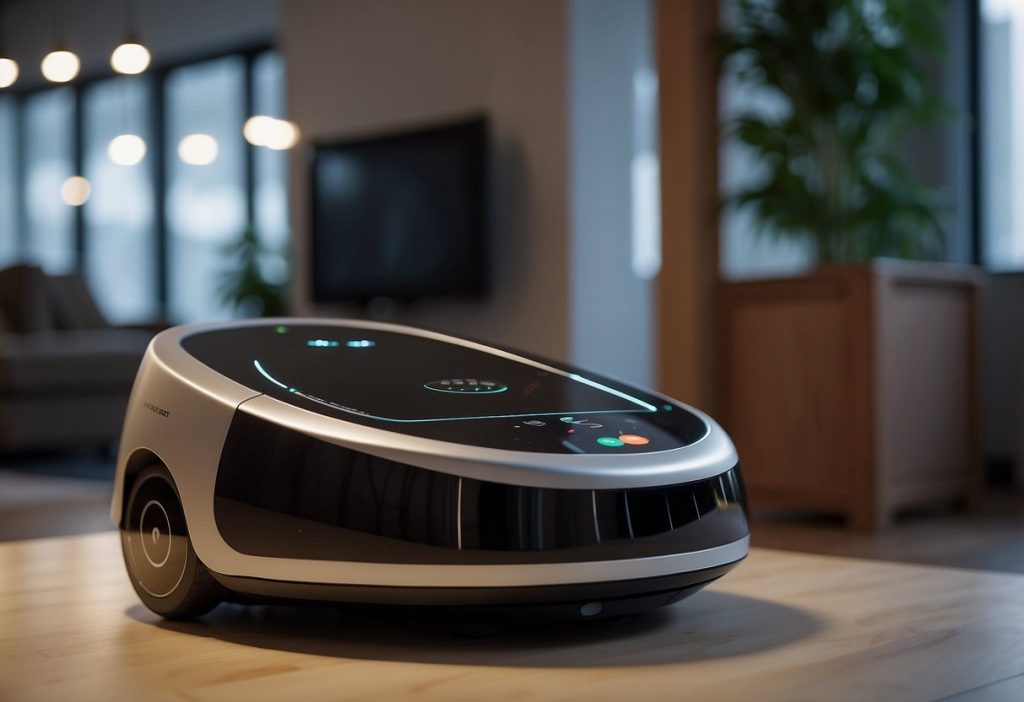
Regular Maintenance Tips:
- Gently wipe the sensors with a microfiber cloth to remove dust or litter particles.
- If you spot any grime, lightly dampen the cloth with some gentle soap—no harsh chemicals here!
- A quick vacuum around the unit can prevent debris buildup that might block sensors.
Feeling handy? It’s cleaning time!
Step-by-step cleaning instructions:
- Power down and disassemble your Litter-Robot. Peace of cake!
- Take each component and give it some love with soap and water—except those electronic parts, of course! A damp cloth will do just fine there.
- After a rinse and dry, reassemble. Look at you, all DIY!
Did someone say “update”? Your Litter-Robot’s brains need regular firmware updates to stay sharp. Grab your phone and hit update on the app to squash bugs and spruce up performance.
Steps to Recalibrate Sensors:
- Do this after a deep clean or firmware update. It’s like teaching your Robot to “sit” again, but instead of treats, you get efficiency!
- Reset your unit and start a few test cycles. Patience is key—you’re a sensor-taming magician now.
Remember to deep clean every few months. Your Litter-Robot will thank you with purrs of satisfaction. Keep these tips up, and you’re on your way to becoming a Litter-Robot whisperer!
Ensuring Accurate Waste Level Detection
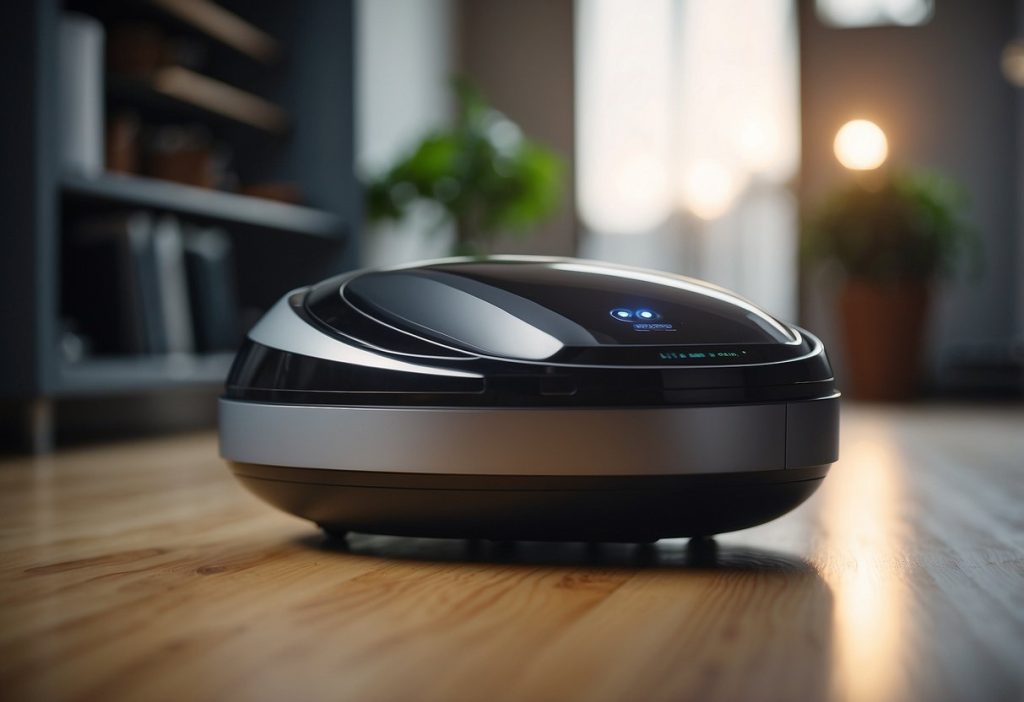
Best Practices for Users
Want a smooth-running robot? Here’s the scoop:
- Avoid overfilling the litter bed: Too much litter can be a party pooper for sensors.
- Regularly empty the waste drawer: Keeping it empty is like giving your robot a high-five.
- Monitor sensor performance and cleanliness: Sensors need some love too. Keep an eye on them!
Regular Maintenance Routines
Setting a schedule for tidying up is clutch:
- Clean the unit, especially sensors.
- Diary date for sensor checks – it goes a long way!
Remember the perks:
- Longer pal-like lifespan for your device
- A+ performance every time
Enhancements in Litter-Robot 4
Got the latest model? Here’s the cool tech inside:
- Laser sensors, precision wizards!
- OmniSense™ detection, like having a superhero sidekick
Staying on top of cleanliness means:
- You’re the Watson to your robot’s Sherlock, ensuring no case goes unsolved.
- Dodging unnecessary repairs – hurray for savings!
In a nutshell, just a smidge of regular love for your Litter-Robot can go miles. Who knew you could be such a fantastic robot whisperer? Keep these tips handy and you’re golden! 🌟
Quick Recap
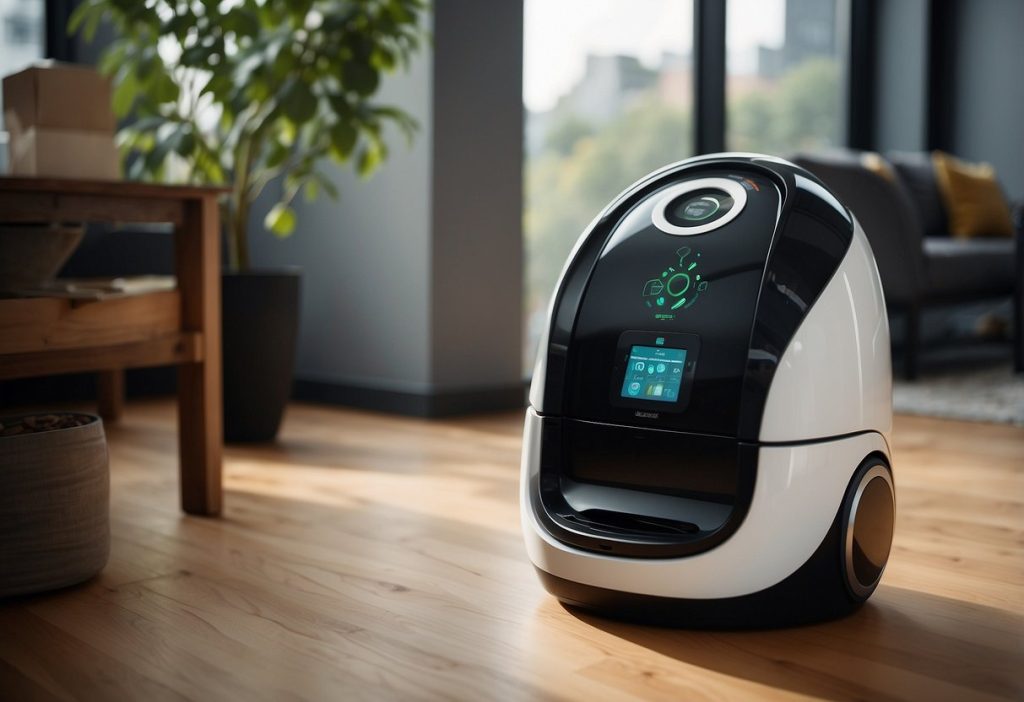
Your Litter Robot relies on clever sensors to figure out when it’s time for a shake-up.
Yep, once your cat’s done their business, these sensors queue the cleaning cycle, and also alert you when the waste drawer is yelling “I’m full!”
But hey, don’t forget, your fluffy friend’s bathroom needs your attention too. Keeping those sensors spotless with regular cleaning, and the robot’s brain – the firmware – up-to-date is crucial.
It’s like a spa day for your robot; it keeps it humming happily for longer. A quick tip between us, be sure to clean routinely and check for updates to keep things running smoothly. Seeking optimal performance?
Flip through the user manual or ping customer support when in doubt. It’s your first line of defense against those “uh-oh” moments.
And for the long haul, following best practices for care, staying in touch with the Litter Robot community, and scoping out additional resources can be your golden ticket.
It’s all about lovingly maintaining the hi-tech throne for your kitty king or queen!
A clean Litter Robot is a happy Litter Robot—and a happy you, free from surprise smells and maintenance muddles. Stay on top of it, and enjoy the journey with your futuristic feline friend’s litter box!
Frequently Asked Questions
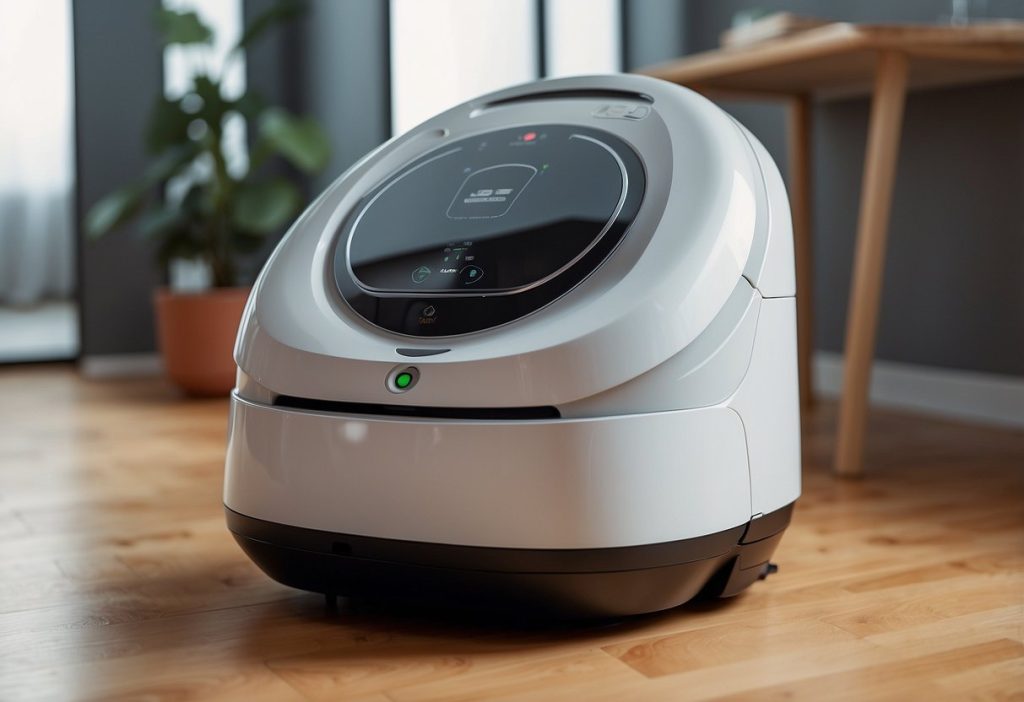
What triggers the ‘drawer full’ indicator on my Litter-Robot device?
You know it’s time for a clean-out when your Litter-Robot’s ‘drawer full’ light comes on. It’s the weight sensor getting to work!
When the waste drawer hits a certain weight, this nifty little sensor sends out an alert.
Just keep an eye on that light to know when your furry friend’s throne needs some attention.
What should I do if the blue light keeps flashing even after emptying the drawer?
Ah, the pesky blue light! If it’s still flashing its little heart out after you’ve emptied the drawer, it’s possible that the sensor just needs a reset.
Press and hold the reset button for a few seconds. If that doesn’t fix it, time to contact customer support—don’t worry, they’re super helpful!
Why is my Litter-Robot falsely reporting that the drawer is full?
Sensors can be a bit overzealous sometimes. If your Litter-Robot cries wolf about a full drawer, it might just need a reset.
Give the unit a little “me-time” by turning it off and on again. If persistent, this might call for a closer look at the sensors for any obstructions or the need for a deep clean.
Where is the full sensor located in Litter-Robot 3?
The Sherlock Holmes within you might wonder where that elusive full sensor hides.
On the Litter-Robot 3, the sensor keeping tabs on the waste level is tucked away right under the waste drawer. It’s the secret agent tracking when it’s time for a clean sweep!
How do I calibrate the full sensor on my Litter-Robot 3?
Calibration is key for precision! To dial your Litter-Robot 3’s full sensor into perfection, empty the waste drawer first.
Then, just like a maestro, press the ‘Empty’ button to initiate calibration. Let it run a full cycle and, voilà, your sensor’s accuracy is tuned up!
Can overfilling the Litter-Robot cause sensor issues?
Absolutely! Cramming the drawer like it’s a tiny suitcase can confuse the sensor. It might think it’s full even when it’s not.
To keep the brain of your Litter-Robot sharp, avoid overstuffing. Think of the sensor as a delicate scale that always wants to be accurate.
What should I do if the Litter-Robot displays a red light?
Red light spells “halt!” for your Litter-Robot, which typically means a jam or an overly full drawer.
After checking for a packed drawer or any blockage, try turning your unit off and on to reset.
If the red beacon of mystery continues to glow, your device is signaling for some expert help from customer service.
- Where to find the most trustworthy real money casinos - August 7, 2025
- Online Casinos That Approve PayPal: The Ultimate Overview - August 7, 2025

